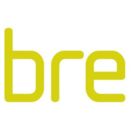Differential ratio of a wet alarm valve
The Loss Prevention Certification Board (LPCB part of BRE Global) sets the standards needed to ensure that fire and security products and services perform effectively. LPCB’s Loss Prevention Standards (LPS) are applied in fire and security sectors around the world.
LPS 1040 - 2.3, Requirements and testing procedures for the LPCB approval and listing of wet alarm valve sets, published by BRE Global in 2014, suggests that the differential ratio of a wet alarm valve is: ‘…the ratio of service pressure to system pressure, measured just before the valve clapper opens to equalise the pressure difference across it, when tested in accordance with the differential ratio test, 1.5.’
[edit] Related articles on Designing Buildings Wiki
- BRE articles on Designing Buildings Wiki.
- Clapper.
- Differential type dry pipe valve.
- Drenchers.
- K factor.
- Making the case for sprinklers and dispelling myths.
- Overview of automatic sprinkler system design and operation.
- Sprinkler systems explained: A guide to sprinkler installation standards and rules.
- Sprinkler.
- The cost efficiency of different combinations of fire protection measures.
- The impact of automatic sprinklers on building design.
- Watermist systems for fire protection in domestic and residential buildings DG 534.
- Wet alarm valve.
Featured articles and news
RTPI leader to become new CIOB Chief Executive Officer
Dr Victoria Hills MRTPI, FICE to take over after Caroline Gumble’s departure.
Social and affordable housing, a long term plan for delivery
The “Delivering a Decade of Renewal for Social and Affordable Housing” strategy sets out future path.
A change to adoptive architecture
Effects of global weather warming on architectural detailing, material choice and human interaction.
The proposed publicly owned and backed subsidiary of Homes England, to facilitate new homes.
How big is the problem and what can we do to mitigate the effects?
Overheating guidance and tools for building designers
A number of cool guides to help with the heat.
The UK's Modern Industrial Strategy: A 10 year plan
Previous consultation criticism, current key elements and general support with some persisting reservations.
Building Safety Regulator reforms
New roles, new staff and a new fast track service pave the way for a single construction regulator.
Architectural Technologist CPDs and Communications
CIAT CPD… and how you can do it!
Cooling centres and cool spaces
Managing extreme heat in cities by directing the public to places for heat stress relief and water sources.
Winter gardens: A brief history and warm variations
Extending the season with glass in different forms and terms.
Restoring Great Yarmouth's Winter Gardens
Transforming one of the least sustainable constructions imaginable.
Construction Skills Mission Board launch sector drive
Newly formed government and industry collaboration set strategy for recruiting an additional 100,000 construction workers a year.
New Architects Code comes into effect in September 2025
ARB Architects Code of Conduct and Practice available with ongoing consultation regarding guidance.
Welsh Skills Body (Medr) launches ambitious plan
The new skills body brings together funding and regulation of tertiary education and research for the devolved nation.
Paul Gandy FCIOB announced as next CIOB President
Former Tilbury Douglas CEO takes helm.
UK Infrastructure: A 10 Year Strategy. In brief with reactions
With the National Infrastructure and Service Transformation Authority (NISTA).























